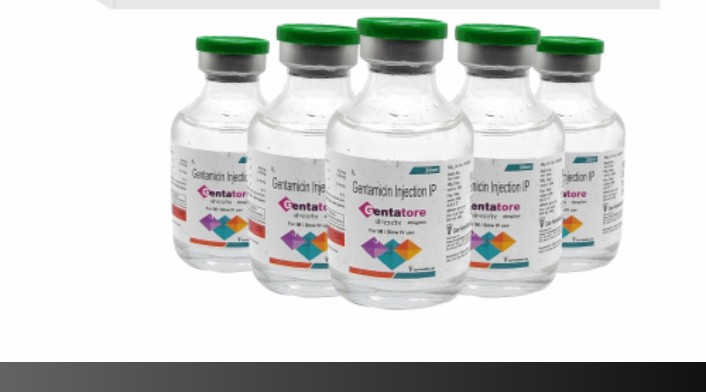
Gentamicin
Description:
Gentamicin is an aminoglycoside antibiotic used to treat a variety of bacterial infections, especially those caused by Gram-negative bacteria. Like other aminoglycosides, gentamicin works by inhibiting bacterial protein synthesis, leading to bacterial cell death. It is commonly used in serious infections such as sepsis, pneumonia, and urinary tract infections, particularly in hospital settings.
Available Brand Names (examples include):
- Gentak
- Garamycin
- Gentaject
- Genoptic
- Gentacidin
Available Forms and Strengths:
- Injection (IV/IM): 10 mg/mL, 40 mg/mL
- Eye Drops/Ointments: 0.3%
- Topical Creams: 0.1%
- Nebulizer Solution: 40 mg/mL (inhalation use)
Uses:
- Severe bacterial infections, especially those caused by Gram-negative organisms, such as Pseudomonas, Proteus, Klebsiella, and E. coli.
- Urinary tract infections (UTIs)
- Bone and joint infections
- Skin and soft tissue infections
- Sepsis
- Respiratory infections like hospital-acquired pneumonia
- Eye infections (as eye drops/ointments)
- Prophylaxis in surgeries for preventing infections, especially in urology and abdominal surgeries.
Side Effects:
- Nephrotoxicity (kidney damage), which may manifest as decreased urine output, elevated serum creatinine, etc.
- Ototoxicity (hearing loss or balance issues), particularly affecting high-frequency sounds.
- Vertigo or dizziness
- Neuromuscular blockade (muscle weakness, very rare)
- Localized reactions at the injection site
- Rare allergic reactions (rash, itching)
Dosage:
- Adults:
- IM/IV dose: 3-5 mg/kg/day divided into 2-3 doses depending on infection severity.
- Dose adjustments are made based on serum drug levels (peak and trough) and kidney function.
- For serious infections, 5-7 mg/kg once daily may be used.
- Pediatric:
- Weight-based dosing similar to adults, but monitored more closely for toxicity.
- Topical: Apply 3-4 times daily for skin infections.
- Ophthalmic (eye drops): 1-2 drops every 4 hours, depending on the severity of the infection.
Contraindications:
- Hypersensitivity to gentamicin or other aminoglycosides.
- Renal impairment (dose adjustment required).
- Pregnancy: It is not recommended unless absolutely necessary (risk of fetal harm).
- Myasthenia gravis (may worsen muscle weakness).
Drug Interactions:
- Other nephrotoxic drugs (e.g., vancomycin, amphotericin B) – increased risk of kidney damage.
- Loop diuretics (e.g., furosemide) – increased risk of ototoxicity.
- Neuromuscular blocking agents – can increase the risk of muscle paralysis.
- Nonsteroidal anti-inflammatory drugs (NSAIDs) – increased nephrotoxic potential.
Warnings/Precautions:
- Kidney function monitoring is essential throughout treatment. Dosage adjustments are required in patients with renal impairment.
- Hearing tests should be conducted, especially for prolonged therapy, to detect early signs of ototoxicity.
- Regular monitoring of serum drug levels is critical (peak and trough levels) to ensure therapeutic efficacy and prevent toxicity.
- Use cautiously in elderly patients due to the increased risk of toxicity.
- Avoid long-term use due to potential severe side effects.
Doctor’s Advice:
- Follow prescribed dosing schedules carefully.
- Inform your doctor if you notice changes in hearing, balance, or urination.
- Complete the full course of treatment.
- Avoid using other nephrotoxic or ototoxic medications unless advised by your healthcare provider.
Would you like more specific details regarding its pharmacokinetics or use in particular conditions?






